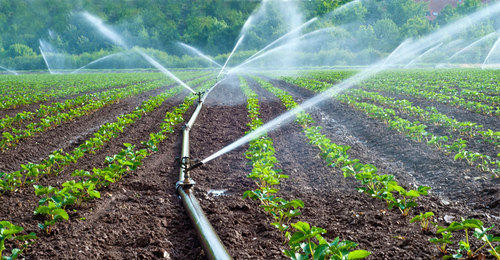In a world where water is increasingly becoming a precious resource, efficient irrigation system are pivotal for sustainable agriculture, landscaping, and gardening. Whether you’re a farmer, a landscaper, or a home gardener, understanding the various irrigation systems available can help you conserve water, improve crop yields, and reduce costs. This blog aims to provide a comprehensive guide to irrigation systems, helping you make informed decisions that benefit both your plants and the environment.
1. The Importance of Efficient Irrigation
Water is the lifeblood of agriculture and plant growth. However, traditional irrigation methods can be incredibly wasteful, leading to water scarcity and higher operational costs. Efficient irrigation systems not only optimize water use but also ensure that plants receive the right amount of water at the right time, promoting healthier growth and higher yields.
2. Types of Irrigation Systems
2.1. Surface Irrigation
Overview: Surface irrigation involves distributing water across the land by gravity. It’s one of the oldest and simplest methods, suitable for flat terrains.
Advantages:
- Low initial setup cost.
- Simple to manage.
Disadvantages:
- High water loss due to evaporation and runoff.
- Not suitable for uneven terrain.
Ideal For: Large-scale farming with ample water supply.
2.2. Drip Irrigation
Overview: Drip irrigation delivers water directly to the plant roots through a network of tubes, emitters, and valves. This method is highly efficient, minimizing water waste.
Advantages:
- Significant water savings (up to 60% less water compared to surface irrigation).
- Reduces weed growth and soil erosion.
- Can be used in uneven and sloped areas.
Disadvantages:
- Higher initial setup cost.
- Requires regular maintenance to prevent clogging.
Ideal For: Gardens, vineyards, orchards, and landscapes with water scarcity.
2.3. Sprinkler Irrigation
Overview: Sprinkler systems mimic natural rainfall, distributing water evenly over the soil surface through spray heads or nozzles.
Advantages:
- Uniform water distribution.
- Suitable for various soil types and terrains.
- Reduces soil erosion and nutrient leaching.
Disadvantages:
- Potential for water loss due to wind drift and evaporation.
- Higher energy and maintenance costs.
Ideal For: Lawns, golf courses, and large agricultural fields.
2.4. Subsurface Irrigation
Overview: Subsurface irrigation involves burying drip lines or tubes below the soil surface, delivering water directly to the root zone.
Advantages:
- Eliminates surface evaporation and runoff.
- Reduces weed growth.
- Improves water use efficiency.
Disadvantages:
- Higher installation and maintenance costs.
- Not suitable for all soil types.
Ideal For: High-value crops, lawns, and areas with strict water regulations.
2.5. Center Pivot Irrigation
Overview: This method uses a rotating sprinkler system that pivots around a central point, ideal for large, flat fields.
Advantages:
- Covers large areas efficiently.
- Reduces labor costs.
Disadvantages:
- Expensive to install.
- Not suitable for small or irregularly shaped fields.
Ideal For: Large-scale farming operations.
3. Factors to Consider When Choosing an Irrigation System
3.1. Water Availability
Evaluate the availability and cost of water. Regions with limited water resources benefit more from efficient systems like drip or subsurface irrigation.
3.2. Soil Type
Different soil types have varying water retention capacities. Sandy soils require more frequent watering, while clay soils retain moisture longer.
3.3. Crop Type
Different crops have specific water needs. High-value crops like fruits and vegetables benefit from precise irrigation methods such as drip systems.
3.4. Budget
Consider both initial setup costs and ongoing maintenance expenses. While drip irrigation may have higher upfront costs, it can lead to significant savings in water and operational costs over time.
4. Sustainable Irrigation Practices
4.1. Rainwater Harvesting
Collect and store rainwater to reduce dependence on municipal or groundwater sources. This not only conserves water but also reduces costs.
4.2. Mulching
Use organic or synthetic mulches to retain soil moisture, reduce evaporation, and suppress weed growth.
4.3. Scheduling and Automation
Implement smart irrigation controllers that adjust watering schedules based on weather conditions and soil moisture levels, ensuring optimal water use.
4.4. Regular Maintenance
Maintain irrigation systems to prevent leaks, clogs, and inefficient water distribution. Regular inspections can save water and reduce costs in the long run.
5. Future Trends in Irrigation
5.1. Smart Irrigation Systems
The integration of IoT (Internet of Things) and AI (Artificial Intelligence) in irrigation systems is revolutionizing water management. These smart systems can monitor weather, soil conditions, and plant health to optimize watering schedules and reduce water waste.
5.2. Sustainable Water Management
With growing concerns over water scarcity, there is a shift towards sustainable water management practices, including the use of treated wastewater and desalinated water for irrigation.
5.3. Precision Irrigation
Advancements in sensors and automation are enabling precision irrigation, which delivers the exact amount of water needed, reducing waste and enhancing crop productivity.
Conclusion
Selecting the right irrigation system is crucial for efficient water use and sustainable agriculture. By understanding the various options available and considering factors like water availability, soil type, and crop needs, you can make informed decisions that benefit your plants, your wallet, and the environment. As technology continues to advance, the future of irrigation looks promising, with smarter, more sustainable solutions on the horizon.



